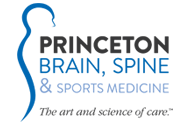What is a Herniated Disc?
A Herniated disc is one of the leading causes of back pain, as 20 out of 1000 people are diagnosed with the condition. According to the American Chiropractic Association, studies show that over 80% of the population will experience some form of back pain over the course of their lives. Small discs cushion the vertebrae in the spine. They provide a strong outer layer around the nucleus to protect the spinal column from shock impact. Over time, these discs degenerate and can be pushed out of place after being ruptured or torn. When this occurs, spinal nerves become pressed against the disc, which can cause intense pain known as sciatica. These types of back issues have a debilitating effect on the lives of patients, and account for over 264 million missed work days annually.
What are the Herniated Disc Symptoms?
Although some patients don’t experience symptoms, there are a number of signs that can indicate a patient may be suffering from this condition. A herniated disc is often marked by a shooting pain that emanates from the lower back through the arms, legs, thigh, calf, shoulders, or buttocks.
Often times this may occur as the result of a particular spinal movement. Other signs include numbness and muscle weakness due to pressure being placed on the nerves. This can cause issues with coordination and balance and even make it difficult to lift objects. These symptoms vary depending on whether your herniated disc is located in the lower back or neck area.
Herniated Disc Treatments
There are many treatments available to alleviate symptoms and heal herniated discs depending on the severity of the condition. Anti-inflammatory medicines are commonly prescribed in order to reduce stiffness and increase muscle mobility. Rest, ice, and physical therapy are often recommended to lessen pain and swelling. In order to minimize inflammation in nerve roots, caudal steroid injections are administered into the lower back. Certain herniated discs don’t improve over time, however, and require more extensive treatments.
The Surgery Option
In the event common treatments are ineffective, the patient must be treated through surgery to prevent further damage and remove the disc placing pressure on the spinal nerves. This is accomplished through Microdiscectomy, which employs the use of camera tools to allow surgeons to identify damaged discs and make small incisions to remove them. In more severe cases, surgeons must conduct Laminectomy procedures, which involves removing bone areas in the vertebrae known as the lamina in addition to the herniated disc. Recovery times for this operation range from two to four months.
